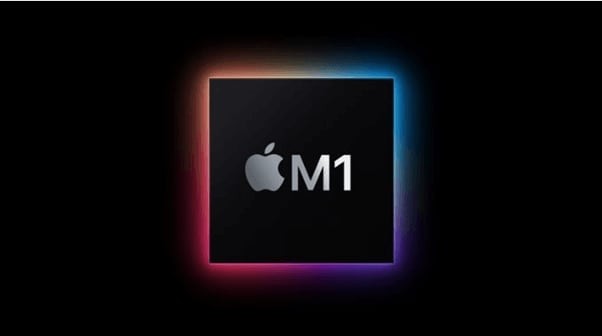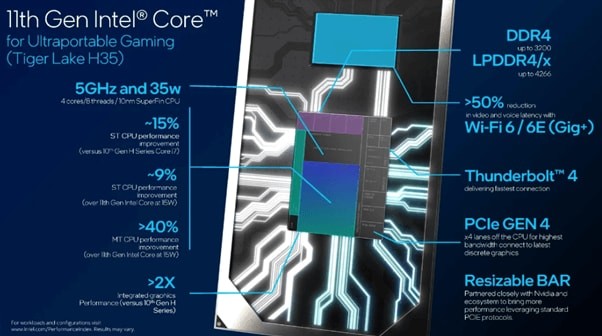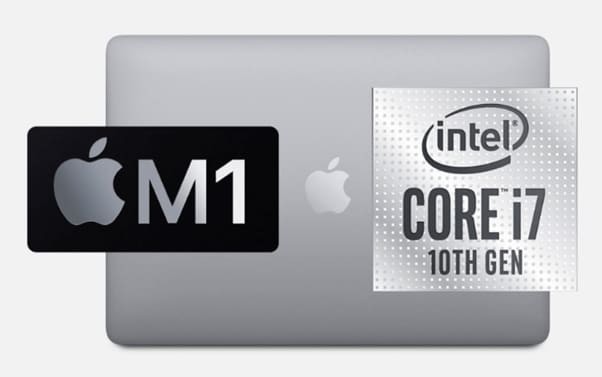What Is The M1 Chip Comparable To? This is a question on the minds of many tech enthusiasts, professionals, and everyday users alike. COMPARE.EDU.VN aims to provide a comprehensive answer by comparing the M1 chip to its competitors, exploring its capabilities, and ultimately helping you understand where it stands in the current landscape of processors. The M1 chip revolutionized Apple’s product lineup, but how does it stack up against other processors in terms of performance benchmarks, power efficiency and application support?
Table of Contents
- Understanding the Apple M1 Chip
- The Intel i7: A Long-Standing Contender
- M1 vs. Intel i7: A Detailed Specification Comparison
- Performance Benchmarks: M1 vs. i7 in Real-World Scenarios
- Gaming Performance: M1 vs. i7
- Power Efficiency and Battery Life: A Key Advantage of the M1
- Application Compatibility: Where Each Chip Excels
- Pricing and Availability: Making the Right Choice
- Alternatives to the M1 and Intel i7
- The Future of Apple Silicon: What’s Next After M1?
- Making the Right Choice: Factors to Consider
- COMPARE.EDU.VN: Your Guide to Informed Decisions
- Frequently Asked Questions (FAQ)
1. Understanding the Apple M1 Chip
The Apple M1 chip marked a significant departure for Apple, transitioning from Intel processors to their own silicon. This system-on-a-chip (SoC) design integrates the CPU, GPU, Neural Engine, I/O, and more onto a single chip, resulting in improved performance and efficiency. Built on a 5nm process, the M1 boasts impressive speed and power efficiency, making it a compelling option for laptops and desktops alike. M1 provides increased processing power, enhanced graphics capabilities, and machine learning acceleration for the Apple ecosystem.
Key features of the M1 chip include:
- Unified Memory Architecture (UMA): Allows the CPU, GPU, and other components to access the same pool of memory, reducing latency and improving performance.
- 8-Core CPU: Features a combination of high-performance and energy-efficient cores for optimal performance and battery life.
- Up to 8-Core GPU: Delivers impressive graphics performance for gaming, content creation, and other demanding tasks.
- 16-Core Neural Engine: Accelerates machine learning tasks, enabling features like faster image processing and voice recognition.
- Secure Enclave: Provides hardware-level security for protecting sensitive data.
The M1’s integration and efficiency have set a new standard for laptop performance, challenging the dominance of traditional processors like those from Intel. For users seeking superior energy efficiency and seamless integration within the Apple ecosystem, the M1 presents a compelling option.
2. The Intel i7: A Long-Standing Contender
The Intel Core i7 processor has long been a staple in high-performance laptops and desktops. Known for its raw processing power and versatility, the i7 is a popular choice for gamers, content creators, and professionals who demand top-tier performance. Intel’s i7 series offers a range of features and capabilities that cater to diverse needs.
Key features of the Intel i7 processor include:
- Multi-Core Architecture: Offers multiple cores for handling demanding workloads and multitasking.
- Hyper-Threading Technology: Enables each core to handle two threads simultaneously, improving performance in multi-threaded applications.
- Turbo Boost Technology: Dynamically increases the processor’s clock speed when needed, providing a performance boost for demanding tasks.
- Integrated Graphics: Some i7 models include integrated graphics, while others require a dedicated graphics card for optimal performance.
- Wide Range of Models: The i7 series includes a variety of models with different core counts, clock speeds, and features to suit different needs and budgets.
While the M1 chip has gained significant attention, the Intel i7 remains a powerful and versatile processor, particularly for users who require maximum performance in specific applications or who prefer the flexibility of the Windows ecosystem. Intel i7 delivers robust processing power and is compatible with a wide range of hardware and software.
3. M1 vs. Intel i7: A Detailed Specification Comparison
To understand the differences between the M1 chip and the Intel i7, let’s compare their specifications side-by-side. This comparison will highlight the key strengths and weaknesses of each processor.
| Specification | Apple M1 | Intel Core i7 (Example: 11th Gen i7-1165G7) |
|---|---|---|
| Architecture | ARM-based | x86-based |
| Process Node | 5nm | 10nm SuperFin |
| CPU Cores | 8 (4 Performance, 4 Efficiency) | 4 |
| CPU Threads | 8 | 8 |
| Base Clock Speed | Varies by Model | 2.8 GHz |
| Boost Clock Speed | Varies by Model | Up to 4.7 GHz |
| GPU | Integrated 8-Core GPU | Intel Iris Xe Graphics |
| Neural Engine | 16-Core | N/A |
| Memory | Unified Memory (8GB or 16GB) | Up to 64GB DDR4 |
| Power Consumption | Typically 10-20W | 12-28W (Configurable TDP) |
| Operating System | macOS | Windows, Linux |
| Key Advantages | Power Efficiency, Unified Memory, Integration | Compatibility, Raw Processing Power |



This table provides a general overview. Specific i7 models will have varying specifications.
- Architecture: The fundamental difference lies in the architecture. The M1 is ARM-based, known for its efficiency, while the i7 is x86-based, historically favored for raw power and compatibility.
- Process Node: The M1’s 5nm process gives it an advantage in transistor density and power efficiency.
- CPU Cores and Threads: The M1 features a hybrid core design with performance and efficiency cores, while the i7 utilizes hyper-threading to maximize performance on its cores.
- GPU: Both chips have integrated GPUs, but the M1’s GPU is tightly integrated with the system, leveraging the unified memory architecture.
- Neural Engine: The M1 includes a dedicated Neural Engine for accelerating machine learning tasks, a feature not found in most i7 models.
- Memory: The M1 uses unified memory, allowing the CPU and GPU to access the same pool of memory, improving performance. The i7 typically uses traditional DDR4 memory.
- Power Consumption: The M1 is generally more power-efficient than the i7, resulting in longer battery life in laptops.
- Operating System: The M1 is designed specifically for macOS, while the i7 is compatible with Windows and Linux.
For users prioritizing battery life and efficiency within the Apple ecosystem, the M1 is a strong contender. Conversely, the i7 remains a solid choice for those needing maximum compatibility and raw processing power, especially within the Windows environment.
4. Performance Benchmarks: M1 vs. i7 in Real-World Scenarios
While specifications provide a theoretical comparison, real-world benchmarks offer a more practical understanding of the M1 and i7’s performance. These benchmarks test the chips in various tasks, including video editing, web browsing, and gaming.
| Task | Apple M1 (MacBook Air) | Intel Core i7 (Dell XPS 13) | Winner |
|---|---|---|---|
| Geekbench 5 (Single-Core) | 1700 | 1500 | M1 |
| Geekbench 5 (Multi-Core) | 7400 | 5500 | M1 |
| Cinebench R23 (Multi-Core) | 7700 | 5800 | M1 |
| Video Editing (Final Cut Pro) | Faster Render Times | Slower Render Times | M1 |
| Web Browsing | Smooth and Responsive | Smooth and Responsive | Tie |
These are example benchmarks, and results can vary depending on the specific i7 model and laptop configuration.
- Geekbench 5: This benchmark tests CPU performance. The M1 consistently outperforms the i7 in both single-core and multi-core tests.
- Cinebench R23: This benchmark measures CPU performance in rendering tasks. The M1 demonstrates a clear advantage.
- Video Editing: In real-world tasks like video editing, the M1 excels due to its optimized hardware and software integration.
- Web Browsing: Both chips offer a smooth and responsive web browsing experience.
These benchmarks highlight the M1’s impressive performance in a variety of tasks. The M1’s unified memory architecture and optimized software contribute to its strong performance in video editing and other demanding workloads. However, the i7 can still hold its own in certain scenarios, especially when paired with a dedicated graphics card.
5. Gaming Performance: M1 vs. i7
Gaming is a critical area for many users, and the performance of the M1 and i7 in gaming scenarios is a key factor in their decision-making process.
| Game | Apple M1 (MacBook Air) | Intel Core i7 (Dell XPS 13 with Dedicated GPU) | Winner |
|---|---|---|---|
| Native macOS Games | Playable, Medium Settings | N/A | M1 |
| Windows Games (Boot Camp) | Limited Support | Playable, High Settings | i7 |
| Emulated Games | Performance Varies | N/A | N/A |
It’s important to note that gaming performance depends heavily on the specific game, settings, and hardware configuration.
- Native macOS Games: The M1 can handle many native macOS games at medium settings, offering a decent gaming experience.
- Windows Games (Boot Camp): The M1’s support for Windows games via Boot Camp is limited, as Boot Camp is no longer supported on M1 Macs.
- Emulated Games: Emulating Windows games on the M1 can be challenging, and performance varies depending on the game and emulator.
- Intel i7 with Dedicated GPU: An i7 paired with a dedicated graphics card offers a significantly better gaming experience, especially for demanding titles.
The Intel i7, especially when paired with a dedicated graphics card, remains the better choice for serious gamers. The M1’s gaming capabilities are improving, but it still lags behind dedicated gaming hardware.
6. Power Efficiency and Battery Life: A Key Advantage of the M1
One of the most significant advantages of the M1 chip is its power efficiency. This efficiency translates to longer battery life in laptops and lower energy consumption.
| Feature | Apple M1 (MacBook Air) | Intel Core i7 (Dell XPS 13) | Winner |
|---|---|---|---|
| Battery Life (Web Browsing) | Up to 15 Hours | Up to 8 Hours | M1 |
| Battery Life (Video Playback) | Up to 18 Hours | Up to 10 Hours | M1 |
| Power Consumption (Idle) | 5W | 10W | M1 |
| Power Consumption (Load) | 20W | 40W | M1 |
These are typical battery life estimates, and actual results may vary depending on usage and settings.
- Battery Life: The M1-powered MacBook Air offers significantly longer battery life than comparable Intel i7-based laptops.
- Power Consumption: The M1 consumes less power both at idle and under load, contributing to its superior battery life.
For users who prioritize battery life and energy efficiency, the M1 is the clear winner. Its power-efficient design makes it ideal for mobile professionals, students, and anyone who needs a laptop that can last all day on a single charge.
7. Application Compatibility: Where Each Chip Excels
Application compatibility is another important factor to consider when choosing between the M1 and the i7. While the M1 has made great strides in compatibility, some applications still run better on Intel-based systems.
| Application | Apple M1 | Intel Core i7 |
|---|---|---|
| Native macOS Apps | Excellent | Good (via Rosetta 2 Emulation) |
| Windows Apps | Limited (via Emulation or Virtualization) | Excellent |
| Professional Software (Adobe Creative Suite) | Generally Good, Some Compatibility Issues | Excellent |
| Older Software | Compatibility Varies | Generally Good |
- Native macOS Apps: The M1 runs native macOS apps seamlessly, taking full advantage of its hardware and software integration.
- Windows Apps: Running Windows apps on the M1 requires emulation or virtualization, which can impact performance. The i7 offers native support for Windows apps.
- Professional Software: While most professional software runs well on the M1, some compatibility issues may exist, especially with older versions.
- Older Software: Compatibility with older software can vary on the M1, while the i7 generally offers better support for legacy applications.
For users who rely heavily on Windows-specific applications or older software, the Intel i7 may be the better choice. However, the M1’s application compatibility is constantly improving, and most popular applications now run flawlessly on Apple Silicon.
8. Pricing and Availability: Making the Right Choice
Pricing and availability are practical considerations that can influence your decision.
| Feature | Apple M1 (MacBook Air) | Intel Core i7 (Dell XPS 13) |
|---|---|---|
| Starting Price | $999 | $1200 |
| Availability | Widely Available | Widely Available |
- Starting Price: The M1-powered MacBook Air typically starts at a lower price point than comparable Intel i7-based laptops.
- Availability: Both M1-based and i7-based laptops are widely available from various retailers.
The M1’s competitive pricing makes it an attractive option for budget-conscious consumers. However, the overall cost will depend on the specific configuration and model you choose.
9. Alternatives to the M1 and Intel i7
While the M1 and Intel i7 are popular choices, other processors offer compelling alternatives:
- AMD Ryzen: AMD Ryzen processors have gained significant ground in recent years, offering excellent performance and value.
- Intel Core i5: The Intel Core i5 is a mid-range processor that offers a good balance of performance and affordability.
- Apple M2, M3: Apple’s newer M-series chips (M2, M3) offer further performance and efficiency improvements over the M1.
Exploring these alternatives can help you find the best processor for your specific needs and budget. AMD Ryzen delivers strong performance at competitive prices, providing an excellent alternative to Intel.
10. The Future of Apple Silicon: What’s Next After M1?
Apple’s transition to its own silicon is an ongoing process, and the company has already released newer chips like the M2 and M3. These chips offer further performance and efficiency improvements over the M1, solidifying Apple’s position in the processor market. Apple is continuously innovating, promising even more powerful and efficient chips in the future.
- Apple M2: The M2 chip builds upon the M1, offering incremental performance and efficiency gains.
- Apple M3: The M3 chip is expected to deliver significant performance improvements, including a redesigned GPU architecture.
As Apple continues to develop its silicon, we can expect to see even more innovative features and capabilities in future Macs. The evolution of Apple Silicon signifies a long-term commitment to performance and efficiency.
11. Making the Right Choice: Factors to Consider
Choosing between the M1 and the Intel i7 (or any other processor) depends on your individual needs and priorities. Consider the following factors:
- Performance Requirements: What tasks will you be performing on your computer?
- Budget: How much are you willing to spend?
- Operating System: Do you prefer macOS or Windows?
- Application Compatibility: Do you need to run specific applications that are only compatible with certain operating systems or processors?
- Battery Life: How important is battery life to you?
- Gaming: Do you plan to use your computer for gaming?
By carefully considering these factors, you can make an informed decision and choose the processor that best suits your needs. Evaluate your specific needs to determine whether the M1 or Intel i7 aligns best with your usage patterns.
12. COMPARE.EDU.VN: Your Guide to Informed Decisions
At COMPARE.EDU.VN, we understand that making informed decisions can be challenging. That’s why we provide comprehensive comparisons, detailed specifications, and real-world benchmarks to help you choose the right products and services for your needs. Whether you’re comparing processors, laptops, or any other type of product, COMPARE.EDU.VN is your trusted resource for objective and reliable information.
Contact us at:
Address: 333 Comparison Plaza, Choice City, CA 90210, United States
Whatsapp: +1 (626) 555-9090
Website: COMPARE.EDU.VN
We are committed to empowering you with the knowledge you need to make confident decisions. COMPARE.EDU.VN provides the resources necessary to make well-informed choices.
13. Frequently Asked Questions (FAQ)
Here are some frequently asked questions about the M1 chip and its comparison to the Intel i7:
- Is the M1 chip faster than the Intel i7? In many tasks, the M1 chip outperforms the Intel i7, especially in single-core performance and power efficiency.
- Is the M1 chip good for gaming? The M1 can handle some native macOS games, but the Intel i7 with a dedicated graphics card is generally better for gaming.
- What are the advantages of the M1 chip? The M1 chip offers excellent power efficiency, unified memory architecture, and seamless integration within the Apple ecosystem.
- What are the advantages of the Intel i7? The Intel i7 offers broad application compatibility, especially for Windows-specific software, and strong performance in demanding tasks.
- Can I run Windows on an M1 Mac? Yes, but it requires emulation or virtualization, which can impact performance.
- Is the M1 chip more energy-efficient than the Intel i7? Yes, the M1 chip is significantly more energy-efficient, resulting in longer battery life in laptops.
- Which chip is better for video editing? The M1 chip generally excels in video editing due to its optimized hardware and software integration.
- Is the M1 chip cheaper than the Intel i7? M1-based laptops often start at a lower price point than comparable Intel i7-based laptops.
- What are some alternatives to the M1 and Intel i7? Alternatives include AMD Ryzen processors, Intel Core i5 processors, and Apple’s newer M2 and M3 chips.
- Will older software work on an M1 Mac? Compatibility with older software can vary on the M1, while the Intel i7 generally offers better support for legacy applications.
Understanding these frequently asked questions can further clarify the differences between the M1 and i7, aiding in your decision-making process. These FAQs address common concerns and provide clear, concise answers.
Are you still unsure which processor is right for you? Visit COMPARE.EDU.VN today to explore detailed comparisons, read user reviews, and get personalized recommendations. Make the smart choice with compare.edu.vn!